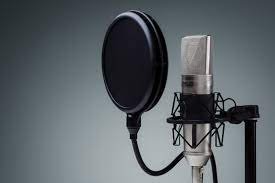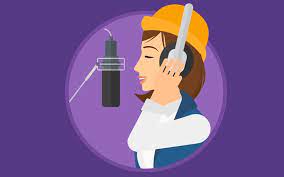What Is The Qualification For A Layout Artist? Diploma In Layout Artist.
The qualification for a layout artist can vary depending on the employer and the specific job requirements. However, there are certain qualifications that can increase your chances of landing a job as a layout artist. Here are some of the qualifications that employers may look for:
- Education and Training
Many employers prefer candidates with a bachelor’s degree in graphic design, fine arts, or a related field. A formal education can provide you with a strong foundation in design principles, typography, color theory, and layout design. However, a degree is not always required, and some employers may hire candidates with equivalent experience or training.
- Technical Skills
A layout artist must be proficient in design software such as Adobe InDesign, Photoshop, and Illustrator. It’s important to have a deep understanding of these programs and be able to use them to create effective layouts. Other technical skills that may be required include knowledge of web design software, HTML, CSS, and JavaScript.

- Creativity and Artistic Skills
Layout artists must have a creative and artistic eye. They must be able to create visually appealing designs that communicate the intended message effectively. They must also be able to conceptualize and develop original ideas, and be able to work with clients to understand their needs and requirements.
- Attention to Detail
A layout artist must have excellent attention to detail, as they must ensure that all elements of the design are aligned and balanced. They must be able to spot errors and inconsistencies in the design and correct them before finalizing the layout.
- Communication and Collaboration Skills
Layout artists often work in a team environment and must be able to communicate effectively with other designers, clients, and stakeholders. They must be able to understand and interpret feedback and be able to incorporate it into the design. They must also be able to collaborate with other designers and artists to create cohesive designs.
- Portfolio

A strong portfolio is an essential requirement for any layout artist. Your portfolio should showcase your design skills and your ability to create effective layouts. As a beginner, you can start by creating designs for personal projects, such as designing flyers or posters for local events. You can also consider taking on freelance work or internships to gain more experience and build your portfolio.
In conclusion, the qualifications for a layout artist may vary depending on the employer and the specific job requirements. However, having a degree in graphic design or a related field, technical proficiency in design software, creativity and artistic skills, attention to detail, communication and collaboration skills, and a strong portfolio can increase your chances of landing a job as a layout artist.
Diploma In Layout Artist
A diploma in Layout Artist is a program designed to provide students with the necessary skills and knowledge to create effective and visually appealing layouts for various types of media, including print, digital, and multimedia. The program is typically one to two years in length and is offered at various design schools and universities.

The curriculum for a diploma in Layout Artist typically includes courses in design principles, typography, color theory, digital imaging, page layout, and design software. The program aims to provide students with a well-rounded education in design and layout, as well as hands-on experience with industry-standard design software such as Adobe InDesign, Photoshop, and Illustrator.
Here are some of the topics that may be covered in a Diploma in Layout Artist program:
- Design Principles
Design principles are the foundation of any layout design. Students will learn about design principles such as balance, contrast, alignment, repetition, and proximity. They will also learn about the importance of negative space and how to use it effectively in their designs.
- Typography
Typography is the art and technique of arranging type to make written language legible, readable, and appealing when displayed. In a diploma program in layout artist, students will learn about typography and how to use it effectively in their designs. They will learn about different fonts, font families, and font combinations. They will also learn about kerning, leading, and tracking, and how to use these techniques to improve the readability and legibility of their designs.
- Color Theory
Color theory is the study of how colors interact with each other and how they affect human emotions and behavior. In a diploma program in layout artist, students will learn about color theory and how to use it effectively in their designs. They will learn about color schemes, color harmony, and how to use color to evoke specific emotions and moods.
- Digital Imaging
Digital imaging is the process of creating, manipulating, and editing digital images. In a diploma program in layout artist, students will learn about digital imaging and how to use software such as Adobe Photoshop to manipulate images. They will learn about image resolution, color modes, and how to use various tools to adjust brightness, contrast, and color levels.
- Page Layout
Page layout is the process of arranging text, images, and other design elements on a page to create an effective and visually appealing design. In a diploma program in layout artist, students will learn about page layout and how to use software such as Adobe InDesign to create layouts for various types of media, including print, digital, and multimedia.
- Design Software
Design software is an essential tool for any layout artist. In a diploma program in layout artist, students will learn how to use industry-standard design software such as Adobe InDesign, Photoshop, and Illustrator. They will learn how to use these tools to create effective and visually appealing designs, as well as how to troubleshoot and fix design issues.

- Portfolio Development
A strong portfolio is essential for any layout artist looking to enter the industry. In a diploma program in layout artist, students will learn how to create a strong portfolio that showcases their design skills and their ability to create effective layouts. They will also learn how to present their portfolio to potential employers and clients.
In conclusion, a Diploma in Layout Artist is a program designed to provide students with the necessary skills and knowledge to create effective and visually appealing layouts for various types of media. The program covers topics such as design principles, typography, color theory, digital imaging, page layout, and design software. Upon completion of the program, graduates will have the skills and knowledge to enter the industry as a layout artist and create effective and visually appealing designs for print, digital, and multimedia media.






